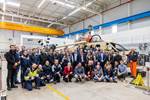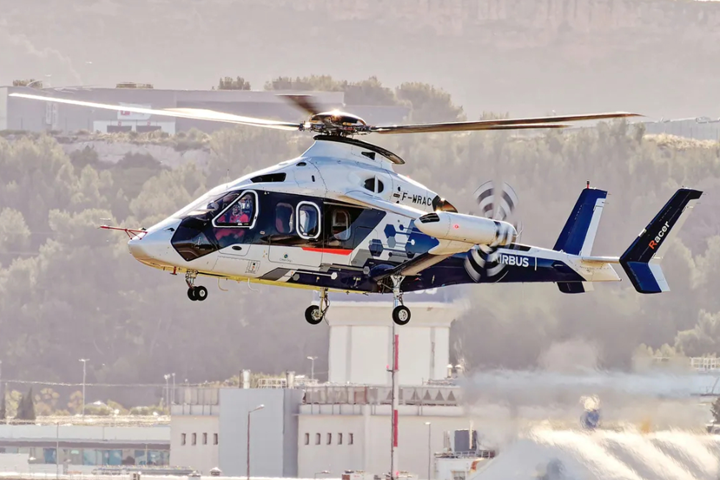Airbus Helicopters RACER demonstrator performs first flight
Rotorcraft architecture featuring a highly composites-intensive design transitions into 2-year flight campaign to demonstrate its high-speed capabilities.
Airbus Helicopters’ (Marignane, France) RACER demonstrator, developed under a European Research Clean Sky 2 project (read “Optimizing AFP for complex-cored CFRP fuselage”), has performed its first flight in Marignane. The aircraft flew for about 30 minutes, enabling the flight test team to check the overall behavior of the aircraft. This important milestone launches the 2-year flight campaign that will aim to progressively open the aircraft’s flight envelope and demonstrate its high-speed capabilities.
“With its 90 patents, RACER is the perfect example of the level of innovation that can be achieved when European partners come together. This first flight is a proud moment for Airbus Helicopters and for our 40 partners in 13 countries,” says Bruno Even, CEO of Airbus Helicopters. “I look forward to watching this demonstrator pioneer high-speed capabilities and develop the ecomode system that will contribute to reducing fuel consumption.”
Optimized for a cruise speed of more than 400 kilometers per hour, the RACER demonstrator aims to achieve the best tradeoff between speed, cost-efficiency and mission performance. It also targets a fuel consumption reduction of around 20%, compared to current generation helicopters of the same class, thanks to aerodynamic optimization and an ecomode propulsion system. Developed with Safran Helicopter Engines, the hybrid-electrical ecomode system enables one of the two Aneto-1X engines to be paused while in cruise flight, thus contributing to cutting CO2 emissions. The RACER also aims to demonstrate how its particular composites-intensive architecture can contribute to lowering its operational acoustic footprint.
The RACER builds upon the aerodynamic configuration validated by the Airbus Helicopters X3 technology demonstrator which, back in 2013, broke the speed record and pushed the limits for a helicopter by reaching 472 kilometers per hour. While the aim of the X3 was to validate the compound architecture, combining fixed wings for energy-efficient lift, lateral rotors for energy-efficient propulsion and a main rotor that provides energy-efficient vertical takeoff and landing (VTOL) flight capacity, RACER aims to take the compound formula closer to an operational configuration and to offer increased capabilities for certain missions for which high-speed can be a real advantage.
For related content, read “LATTE project optimizes aerodynamic flow of RACER rotor head.”
Related Content
-
The state of recycled carbon fiber
As the need for carbon fiber rises, can recycling fill the gap?
-
Infinite Composites: Type V tanks for space, hydrogen, automotive and more
After a decade of proving its linerless, weight-saving composite tanks with NASA and more than 30 aerospace companies, this CryoSphere pioneer is scaling for growth in commercial space and sustainable transportation on Earth.
-
PEEK vs. PEKK vs. PAEK and continuous compression molding
Suppliers of thermoplastics and carbon fiber chime in regarding PEEK vs. PEKK, and now PAEK, as well as in-situ consolidation — the supply chain for thermoplastic tape composites continues to evolve.

















